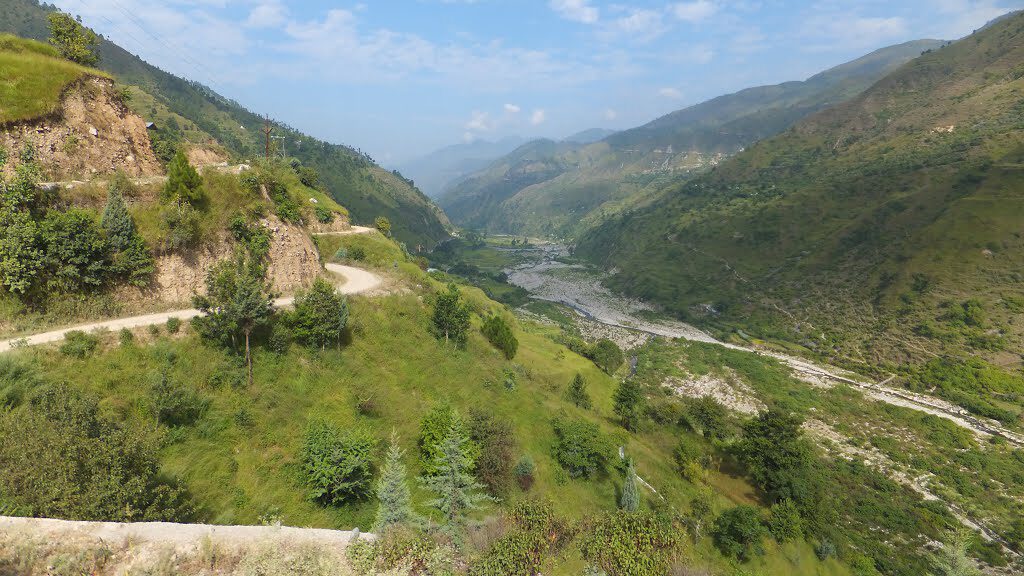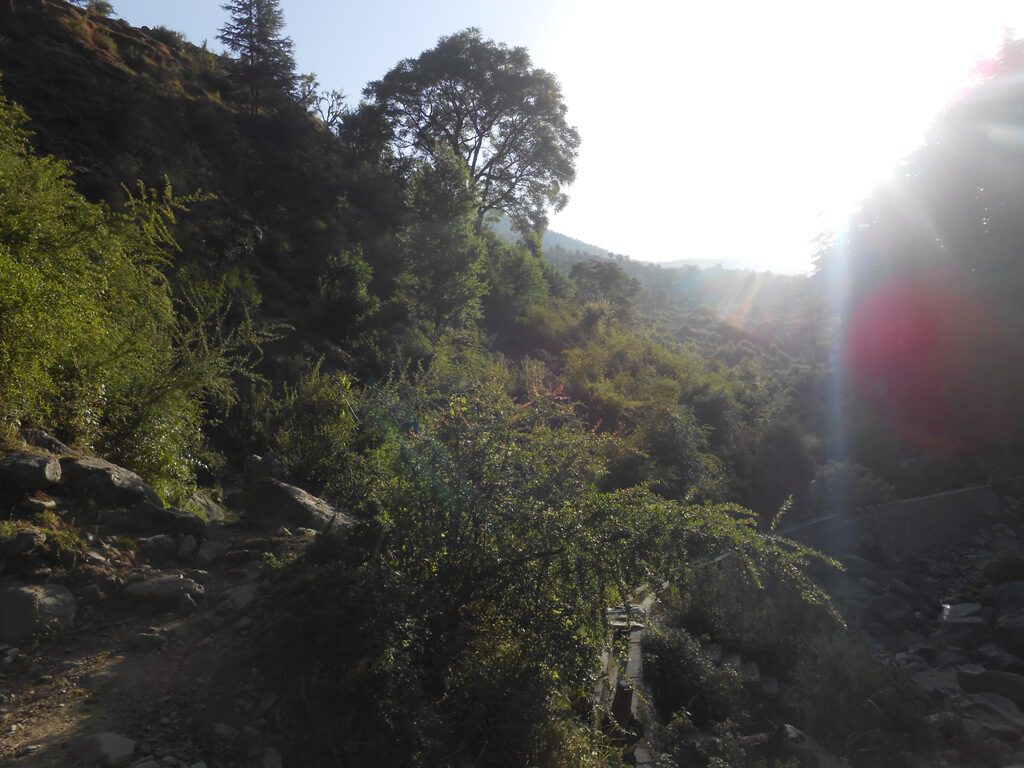Anyone looking north from Mussoorie or Dhanaulti will be gazing across the Aglar Valley. From the valley floor rises the Nag Tibba range, beyond which stand the snow peaks of the mighty Great Himalayan Range. The wide valley of the Aglar is drained by the namesake river, a westward-flowing tributary of the Yamuna, into which it empties at Yamuna Pul.

The journey to the valley begins with Oak-Rhododendron forest around Magra, giving way to Cheer Pine forest and eventually to cultivated terraces and open hillsides used for grazing cows and goats. This gradient in altitude and habitats makes this valley good for birders. The areas closer to the valley floor are a it barer than one expects. Access is via Suakholi, on the route to Dhanaulti. From here, one can either drive eastward, via Dhanaulti, towards the Bhagirathi catchment and Tehri Dam, or turn north towards Thatyur. The road to Thatyar descends through beautiful forests into the Aglar basin. On this route are the Forest Rest House and plant nursery at Magra, run by the Uttarakhand Forest Department. A signboard marks the left-hand U-turn down to this old, cosy rest house. These roads are easily motorable in any kind of vehicle. An alternative walking trail is via a centuries-old bridle path from Magra View Bend. This easy, satisfying downhill walk is directly to Magra, and in terms of actual distance is much shorter than the motor road.
The Raj-era Magra FRH is on the sun-facing side of this side-arm of the valley, and is cloaked by attractive forests and terraced fields. Magra FRH is surrounded by fruiting trees, mostly walnut, apple and apricot, along with saplings of various indigenous tree species. Along with the natural forests around, this blend of human cultivation and natural habitat attracts much birdlife. Around here one may find Hill Partridge, Black Francolin, Slaty-headed Parakeet, Blue-throated Barbet, Great Barbet, Himalayan Woodpecker, Himalayan Flameback, Chestnut-bellied Rock Thrush, Rufous Sibia, White-browed Fulvetta, Collared Grosbeak and Whiskered Yuhina and Black-headed Jay. Before the paving of the Suakholi-Thatyur road in the 1990s and the diversion of a local stream (into fields), Magra was a small casbah, where mule trains spent the night and provisions could be bought. That era is gone but a night or two at the FRH gives a chance to look for nocturnal species in the fields and orchards. Species may include Spot-bellied Eagle Owl, Tawny Owl, Eurasian Eagle Owl, Asian Barred Owlet and Grey Nightjar. A Collared Owlet may reveal itself, even in daytime. Among mammals, Leopard, Red Fox, Himalayan Weasel, Himalayan Palm Civet and Yellow-throated Marten inhabit these areas as well.

Further on, the road gradually descends through sparse forests of Cheer Pine towards Thatyur, the beginning of the climb to Deolsari (Devalsari). This part has some greenery, but, having been logged in the 1800s, has fewer trees. Most of the vegetation is scrubby and thorny Barberry (Berberis spp.) shrubs, which fruits in the summer and attract frugivorous birds such as Yellow-breasted Greenfinch and Orange-bellied Leafbird.
The drive eastward to the upper Aglar Valley via Almas Junction is long and dry. Since this area is somewhat deforested, with open cultivated fields and dusty villages, there are fewer birds but mynahs and sparrows are common. However, one might see Himalayan Griffon, Eurasian Griffon, Common Kestrel and on occasion, even Lammergeier as they soar on thermals above the valley. After the monsoon, the area takes on a greener look and birding improves, sharply.
The fields may have Hill Partridge and Black Francolin. Looking up at the open hillside, it is seen that many areas are divided into open spaces by low stone walls and marked by cairns. This has been done by villagers who have inherited centuries-old grazing rights for their livestock on these stony slopes, where good grazing is scarce in the drier months before he monsoon. There are regular tiffs about which family’s cows jumped which wall, and the like.
The village of Bhaal is interesting. The two-story houses have slate roofs, now vanishing from the Himalaya but still seen here. Modernity is coming; the odd satellite dish is visible. These old humans on the upper. The heat the livestock let off (including their flatulence) warms the floor above in the winter. Beyond Bhaal the road is tougher but climbing to the Moriana pass, through mixed forests, offers a mesmerising view of the snow-clad Himalaya. For those without transport, these interesting areas are still accessible. Buses ply the Mussoorie- Tehri route via Suakholi, as jeep-taxis do on the Suakholi-Thatyur route. One may have to share the jeep with some fresh produce and a live chicken or two, which may be seen as a chance to strike a bargain for the kitchen!
